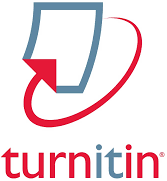Natural Feed Administration During Fattening Stage for the Growth of Mud Crabs (Scylla sp.) Under Different Rearing Systems
DOI:
https://doi.org/10.29303/jfh.v4i4.5930Kata Kunci:
Feed Efficiency, Mud Crab, Rearing Systems, Scylla spp., Sustainable AquacultureAbstrak
Mud crab (Scylla spp.) aquaculture holds significant potential in supporting food security, economic growth, and ecological balance. This study aims to summarize various findings related to critical factors in mud crab farming, such as feed types, rearing systems, and stocking density, and their impact on productivity, feed conversion ratio (FCR), and economic profitability. The review highlights that trash fish feed at 15% of body weight yields optimal growth and feed efficiency due to its high protein content. Feed diversification, including stingray and janitor fish, offers promising results with reduced costs. Various rearing systems are employed, ranging from cages and earthen ponds to advanced technologies such as Recirculating Aquaculture Systems (RAS). Small bamboo floating cages demonstrate superior outcomes in growth and survival rates (SR). Mangrove habitats significantly enhance crab growth, while silvofishery systems provide a sustainable farming alternative. Optimal stocking density, such as 4 crabs/m², balances growth and production. Additionally, Scylla serrata exhibits the best growth rate compared to other species, particularly males. Innovations like soft-shell farming technology add economic value to the product. Overall, the success of mud crab aquaculture depends on the optimal combination of feed, rearing systems, and environmental management. This review offers strategic insights for developing efficient, sustainable, and economically viable crab farming practices.
Unduhan
Diterbitkan
Terbitan
Bagian
Lisensi
1. The copyright of this journal belongs to the Editorial Board, based on the author's consent, while the moral rights of the publication belong to the author(s).
2. The formal legal aspect of journal accessibility refers to the same Creative Common Attribution + Noncommercial + ShareAlike (CC BY-NC-SA), implying that publication can be used for non-commercial purposes in its original form.
3. Every publication (printed/electronic) is open access for educational, research and library purposes. In addition to the objectives stated above, the editorial board is not responsible for copyright infringement















